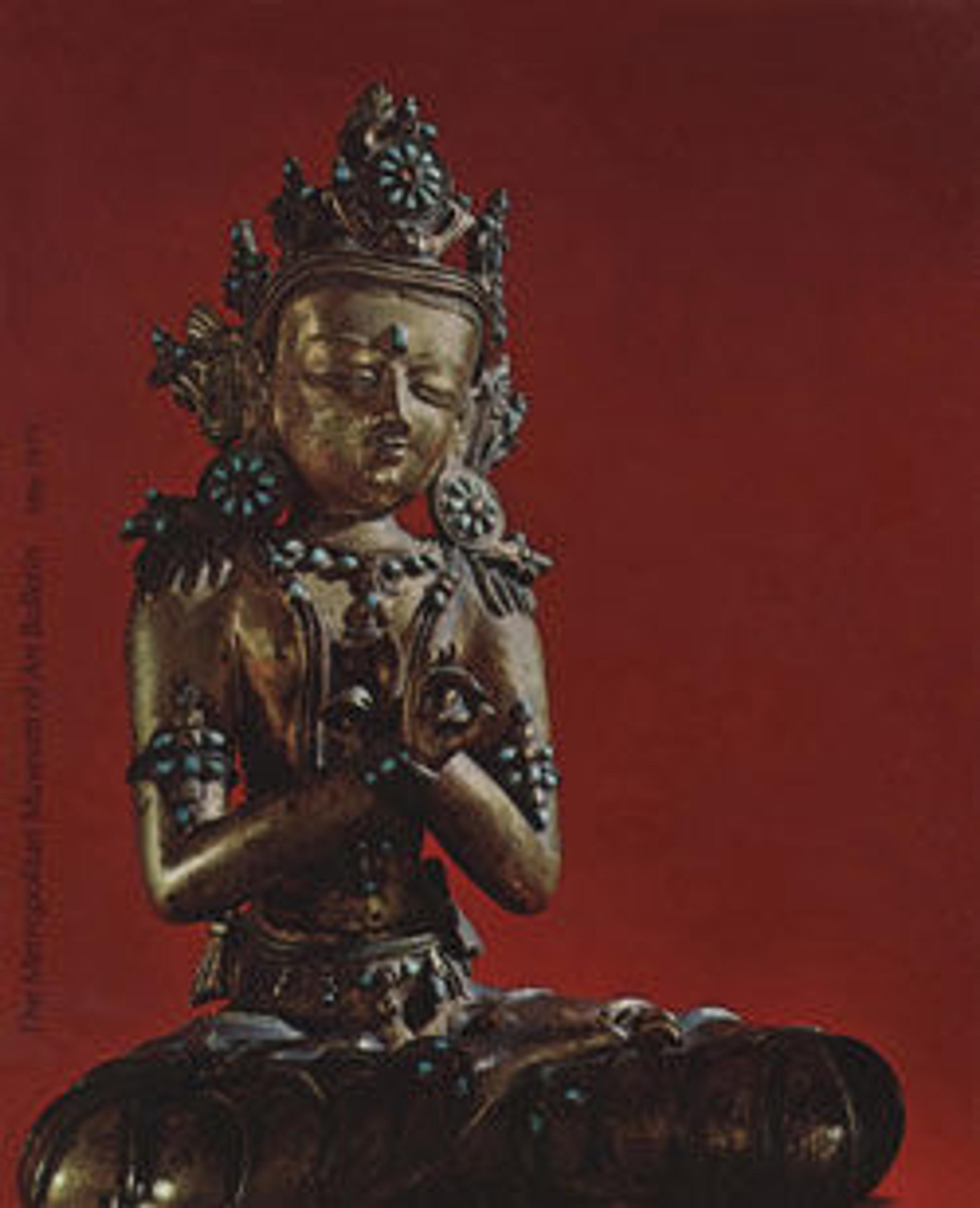The Primordial Buddha Vajradhara
The Buddha Vajradhara is a divine manifestation of the totality of Buddhist teachings and is credited with being the source of the Buddhist tantric texts. Here, he holds a vajra and a bell that symbolizes energy (male) and emptiness (female). This sculpture is remarkable for the many surviving original inset pieces of turquoise and semiprecious stones and for the silver wire inlay in his dhoti (loincloth). These components indicate his divine status and evoke the crystalline nature of the heaven where he resides.
Artwork Details
- Title:The Primordial Buddha Vajradhara
- Date:15th century
- Culture:Tibet
- Medium:Gilt copper alloy with inlaid silver filaments, turquoise, and semiprecious stones
- Dimensions:H. 18 in. (45.7 cm); W. 12 1/4 in. (31.1 cm); D. 9 in. (22.9 cm)
- Classification:Sculpture
- Credit Line:Bequest of W. Gedney Beatty, 1941
- Object Number:41.160.97a, b
- Curatorial Department: Asian Art
More Artwork
Research Resources
The Met provides unparalleled resources for research and welcomes an international community of students and scholars. The Met's Open Access API is where creators and researchers can connect to the The Met collection. Open Access data and public domain images are available for unrestricted commercial and noncommercial use without permission or fee.
To request images under copyright and other restrictions, please use this Image Request form.
Feedback
We continue to research and examine historical and cultural context for objects in The Met collection. If you have comments or questions about this object record, please contact us using the form below. The Museum looks forward to receiving your comments.
